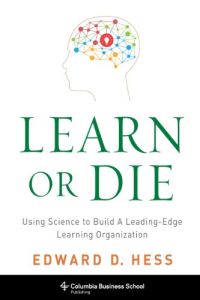Join getAbstract to access the summary!

Join getAbstract to access the summary!
Edward D. Hess
Learn or Die
Using Science to Build a Leading-Edge Learning Organization
Columbia UP, 2014
What's inside?
High performance learning organizations have the right people, the right environment and the right processes.
Recommendation
Professor Edward D. Hess offers a clear, methodical synthesis of current research. If you are familiar with the fields of learning and thinking, or with learning organizations, you’ll recognize much of this intelligently compiled content. However, you’ll still learn from reading Hess’s clear, methodical overview, which works as a manual for applying today’s research to yourself and your firm. While focusing on core concepts and tools, Hess also offers usefully honest accounts of his personal experiences and the transformations people go through to become better learners. His case studies are fascinating. getAbstract recommends Hess’s work to teachers, managers, innovators and anyone interested in learning organizations.
Summary
About the Author
Edward D. Hess, the Batten executive-in-residence at the University of Virginia Darden Graduate School of Business, also wrote Smart Growth and 10 other books.




















Comment on this summary